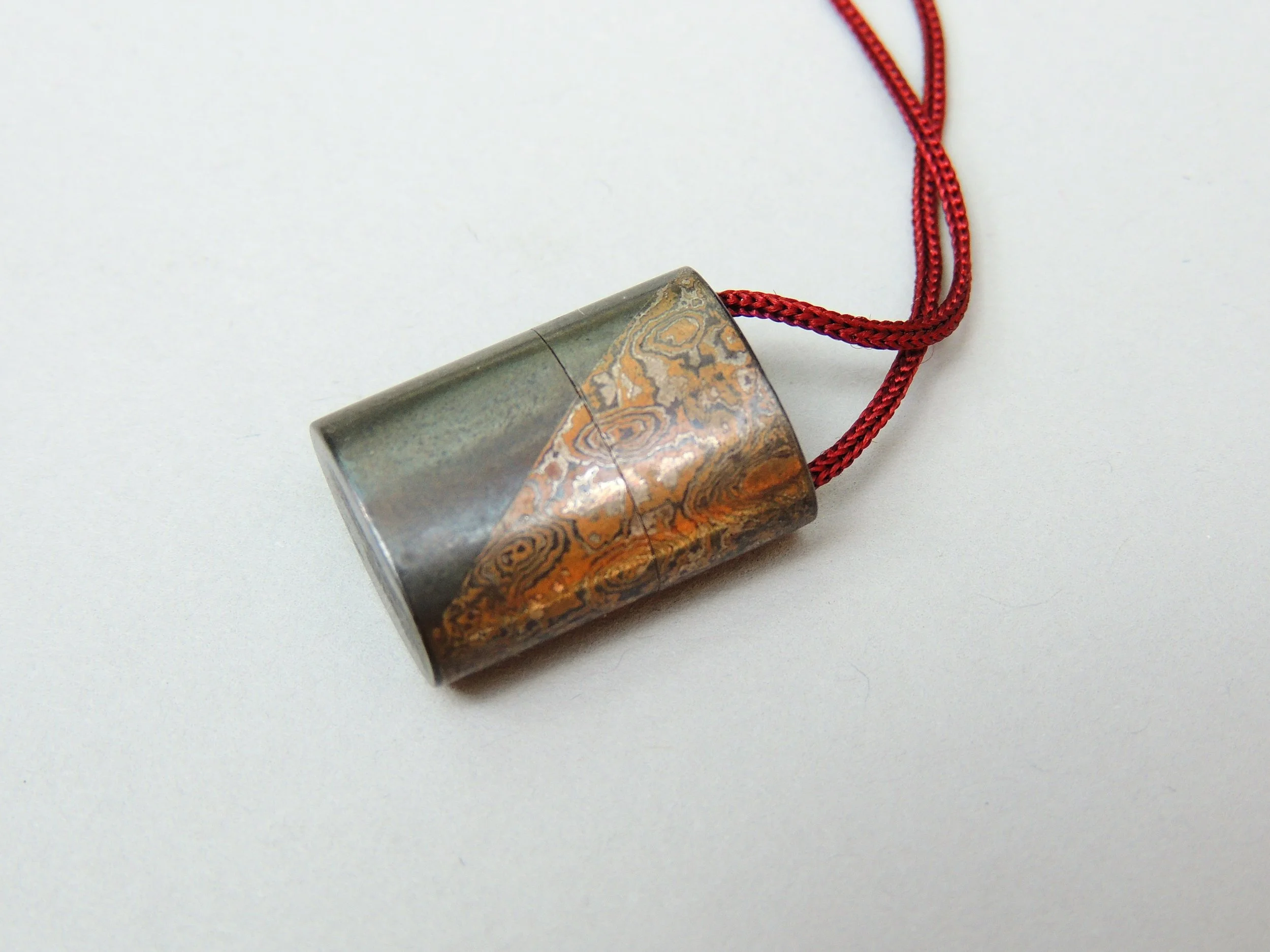Signed 松正 unknown maker
Late Edo period, 18/19th century
1615-1868
Inro
Five-case inro on a densely covered nashiji ground, gold and silver takamakie with details of kirigane and a nashiji interior. It was a common folk tale in japan that shishi lions were proud, valiant creatures, whose fierce and noble spirits for some reason have a habit of entering and possessing human beings, at least in the kabuki plays of Edo Japan. It was believed that shishi fathers would take their cubs to the edge of a cliff and push them off in the hope that they would be strong enough to climb back up. This would have been a moral story to teach that life is not easy and it takes strength and persistence to be worthy of it. This inro seems to be depicting this folk tale as a young shishi is climbing up a rock face and looking up at a high waterfall on the other side showing he has far to go. The owner of this inro would have looked at it reflecting on his strength to persist with his daily struggles.
Signed 松正 unknown maker
95mm x 47mm
Ojime
shakudo bead with gilt decoration.







